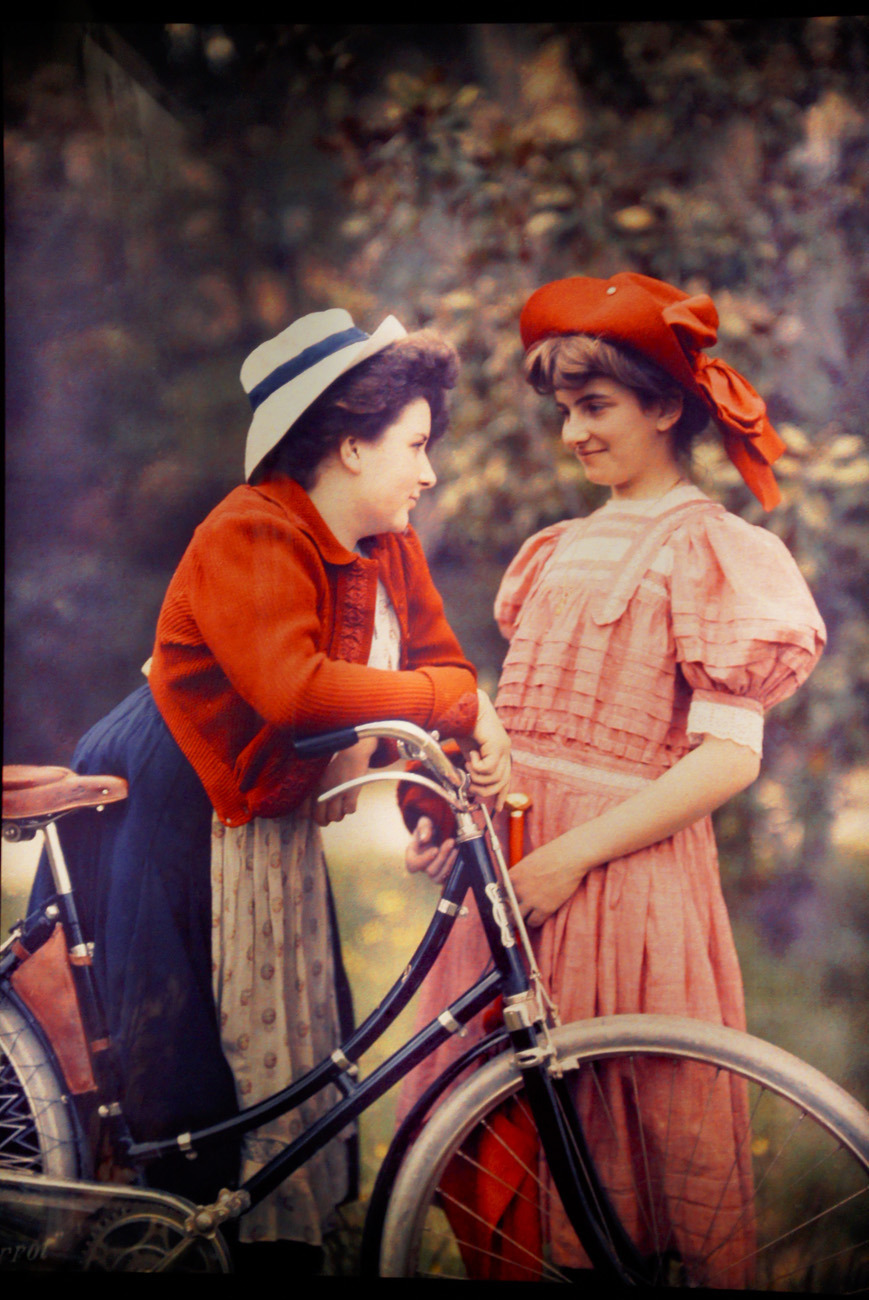Autochrome photography was a revolutionary invention of it's time. It caused excitement among the wealthy, and came with criticism from traditional photographers around the world. Today, it is admired as a beautiful art form that can transport us back in time and give us a clear idea of what life was like in the early 1900's through the 1930's. I could spend hours looking at these photographs that depict every day life way back when. Being able to see such historic fashion and scenery in vibrant color of a time that is long gone fascinates me. I was inspired to create a series of my own photographs in all 1910's clothing, one of my favorite eras, in the style of the signature autochrome look. Also, used in these photographs is an antique Vogue magazine from May of 1918 from my good friend Val of Junkerval's in Fort Worth. She has incredible pieces that you truly will not be able to find anywhere else.
Autochrome was patented in 1903 by the Lumiere brothers of France. It was them that invented this color photography process, long before color film was used. It was a lengthy and complicated process, but resulted in beautiful, colorful photographs that captured precious moments in history. The technique involved the use of potato starch that was dyed in many different colors, then placed onto a plate, as you would place mosaic. There would be millions of grains of potato starch per square inch to make up each photograph, then the rest of the gaps would be filled with black powder, thus giving the dark filter most of the photographs have. The product was not necessarily a photograph, but the plate itself with the image imprinted on it. The only way to properly view them was with a viewing device specifically made for them, or to be projected using a projector with harmful light that potentially burnt them after just a few minutes. The only possible way to obtain a photograph through it was to make a reproduction of the plate itself.
The beginning of using this process came with a lot of doubt from critics. Some would say that this new color photography would never catch on, as black and white was just the way of life. It could be used by professionals, but also amateurs who enjoyed taking photographs. It was difficult to use, as it involved a long exposure to capture a shot. It required the subject to remain very still for a few seconds in order to retain any sharp quality. It was also very expensive at the time to be able to use autochrome. Mostly the wealthy used the it for fun. It's popularity only lasted up until the 1930's when it was replaced with the new color film. Though, the autochrome was in existence until the 1950's, until finally coming to an end. Their legacy still lives on today as stunning images that we can look at with amazement, but also great for research purposes. There is a museum outside of Paris called the Albert Kahn Museum that displays many of these images. Kahn was a banker who is known to have one of the largest autochrome collections in the world with over 72,000 photographs all of which were from over 50 different countries. (This is on my to do list.)
I enjoy being able to live through my clothing just to get a taste of what life was like, and to capture moments that they would have captured. Now, take a look at some of my favorite autochrome photographs that inspired me, and hopefully you will feel the same way.


















No comments:
Post a Comment